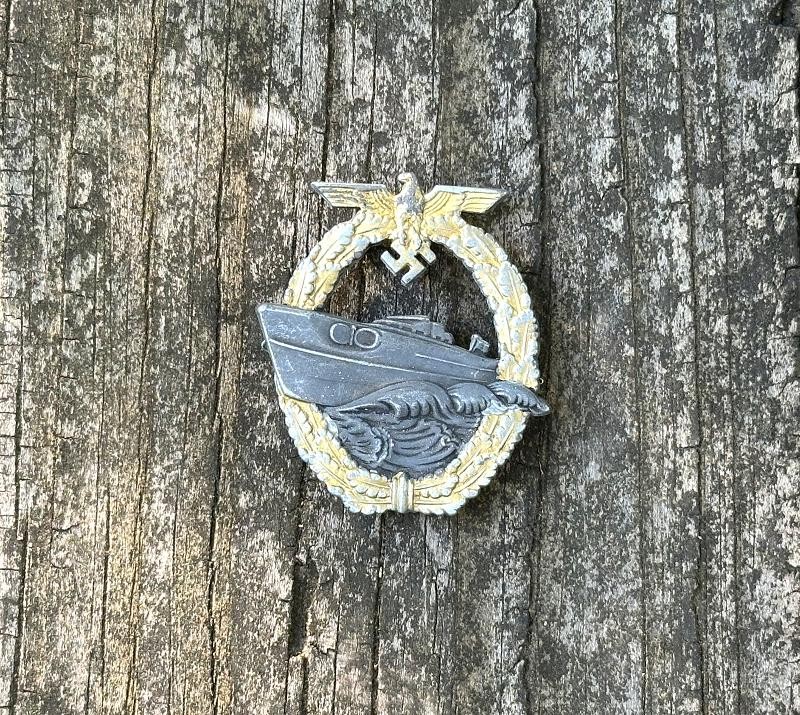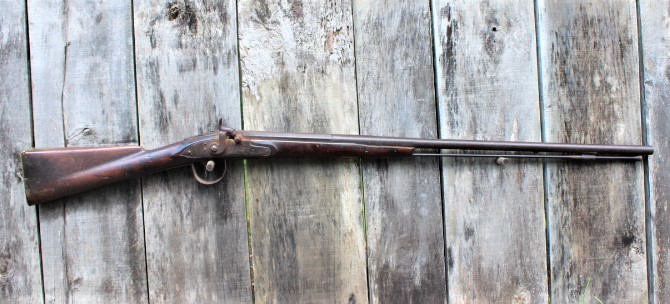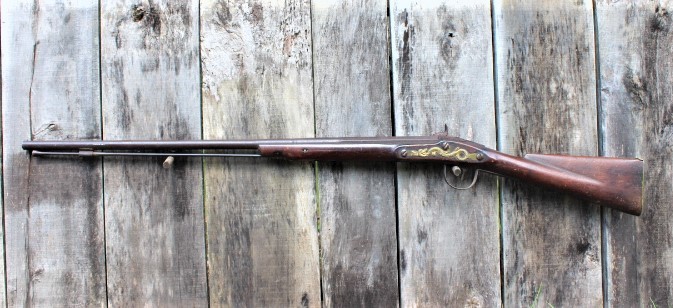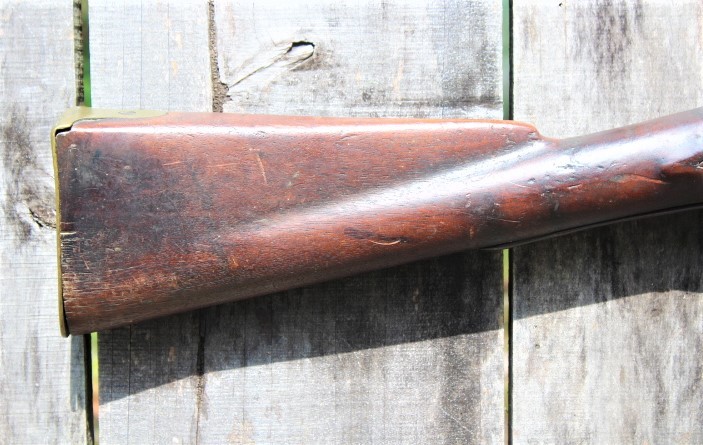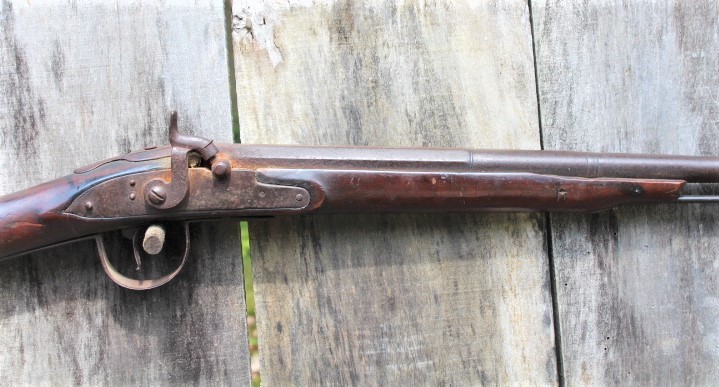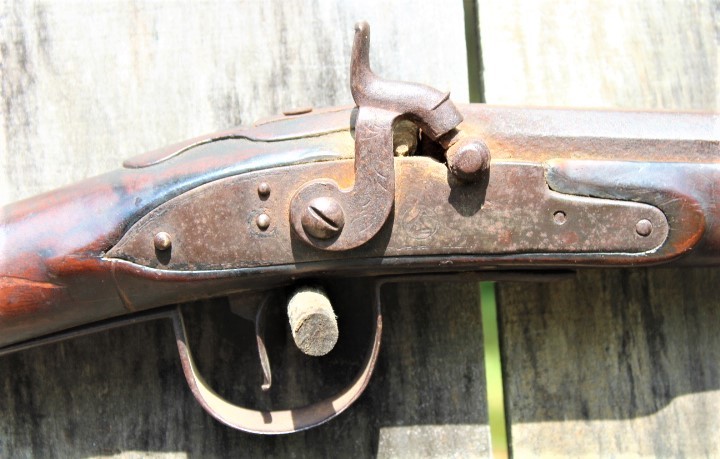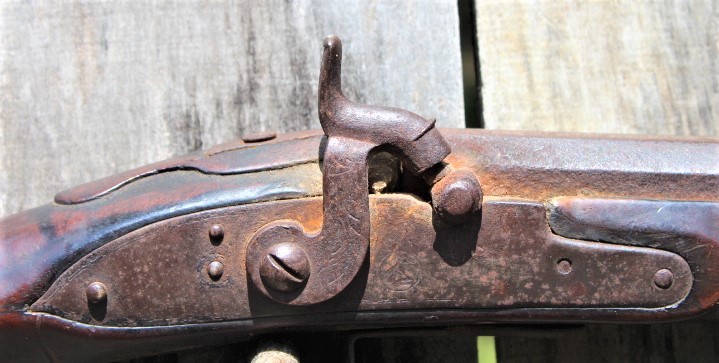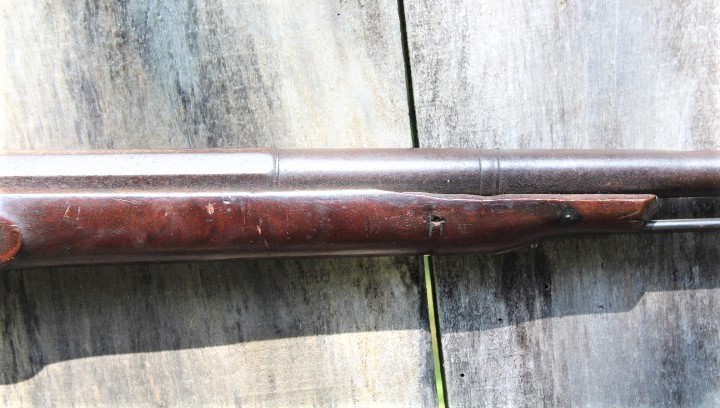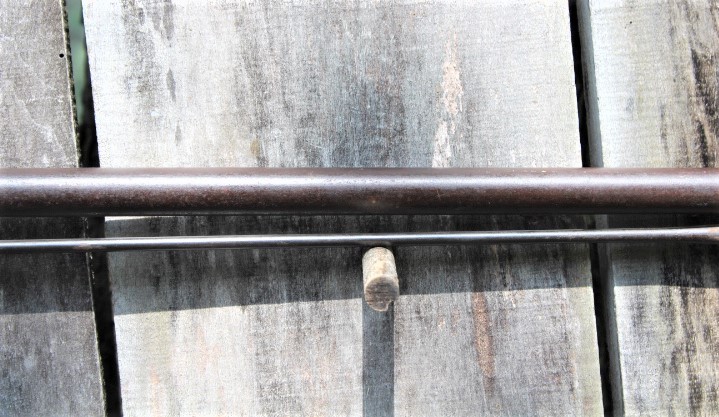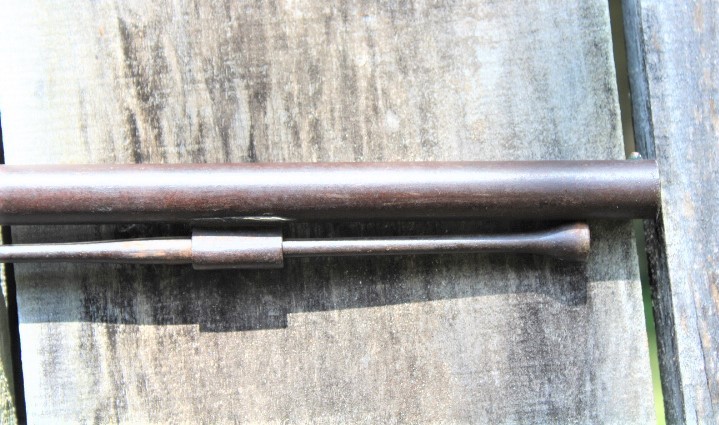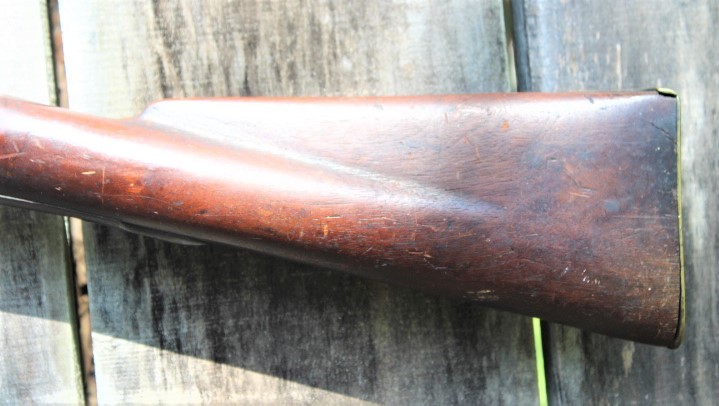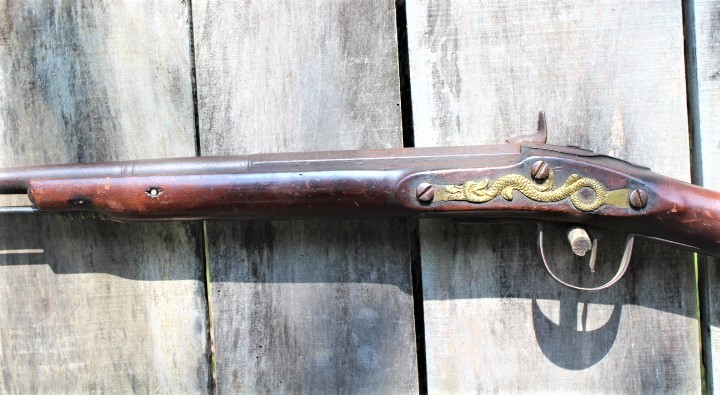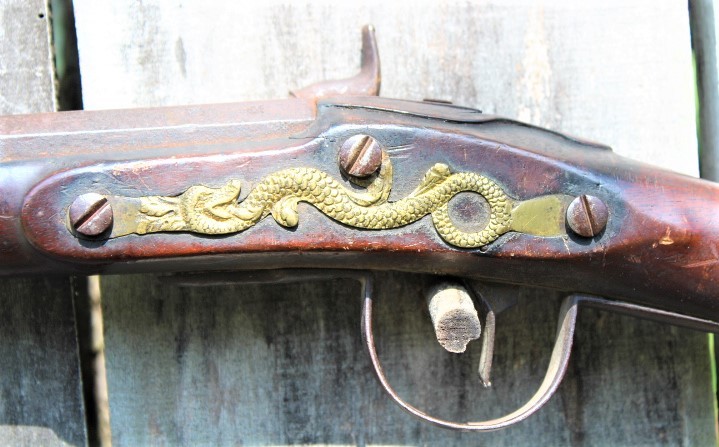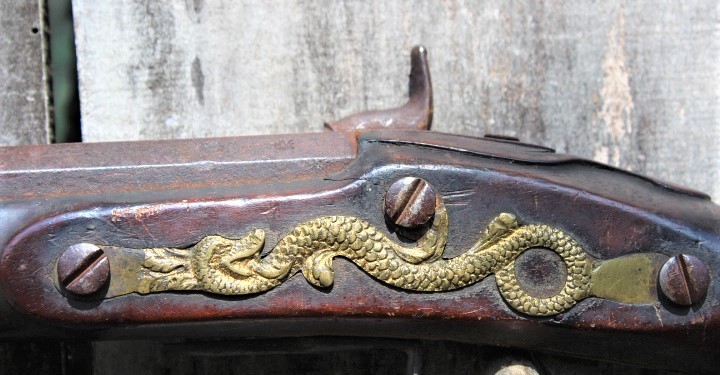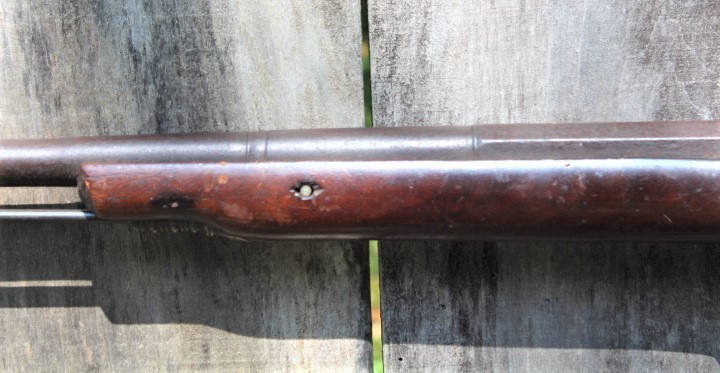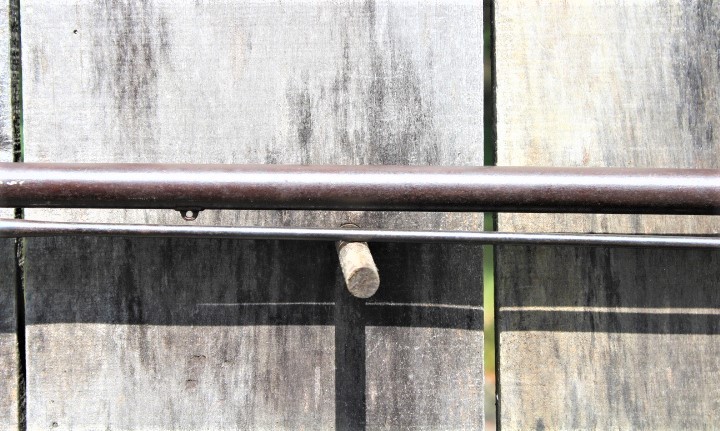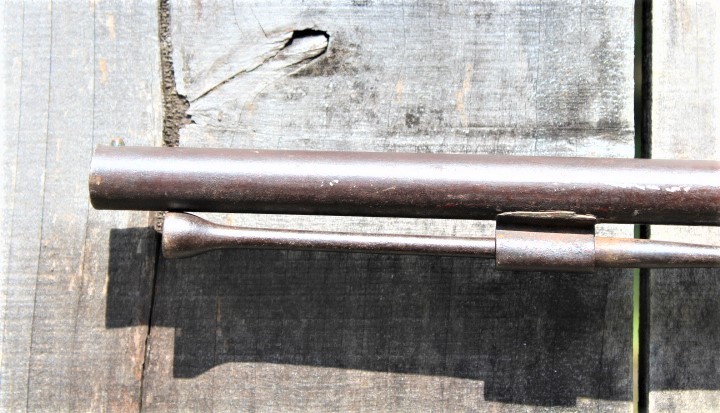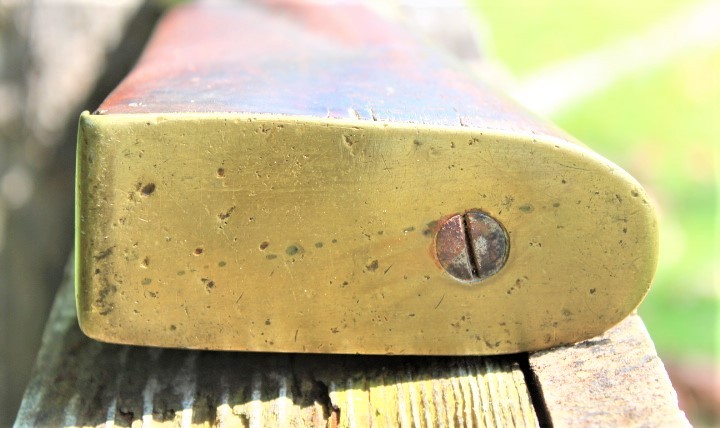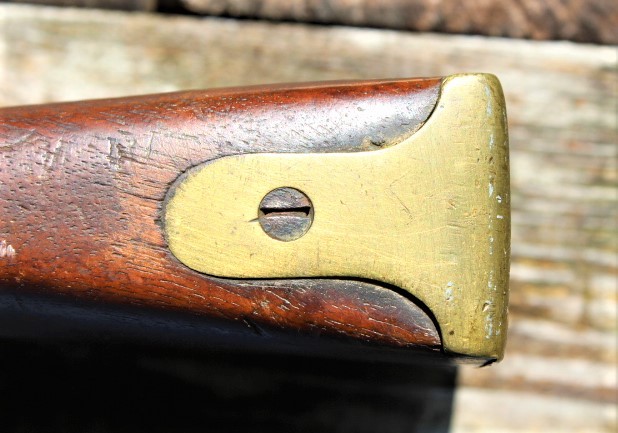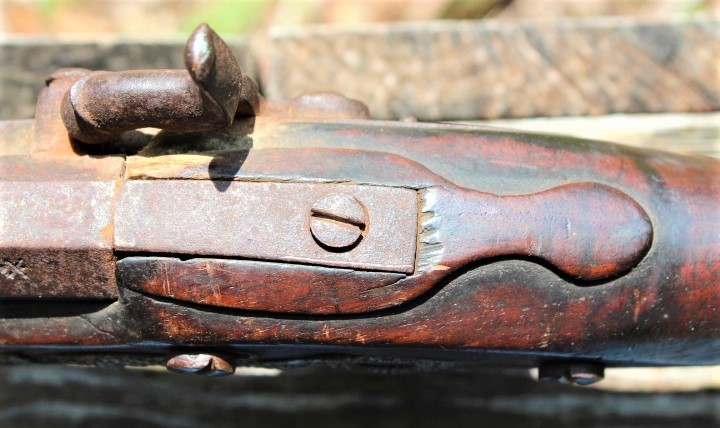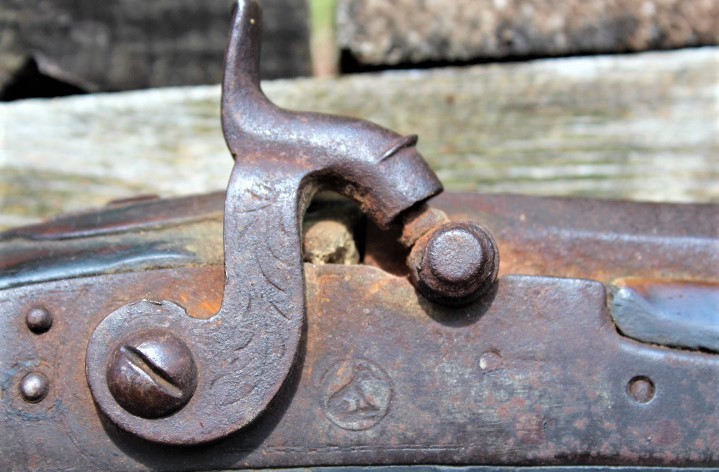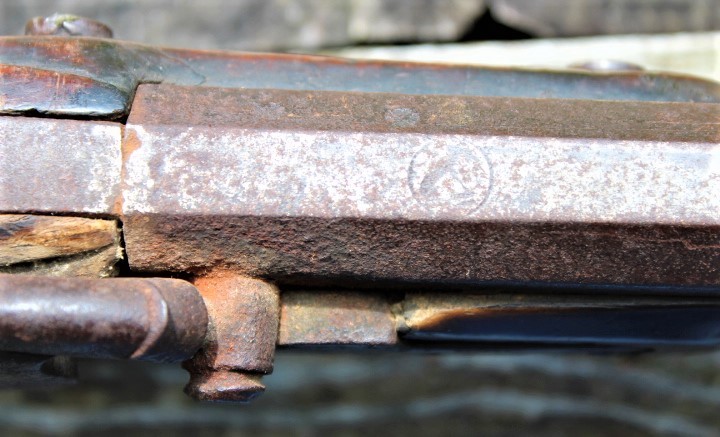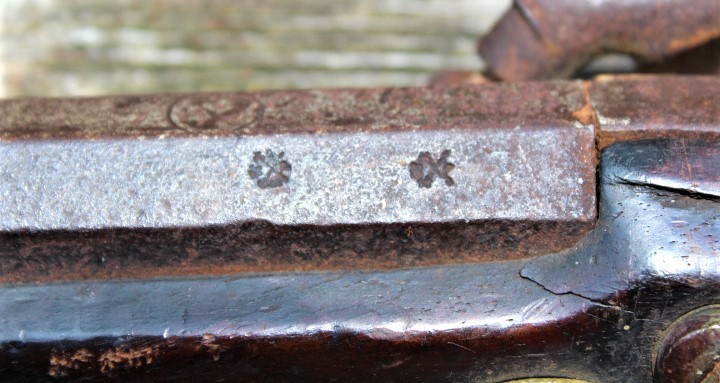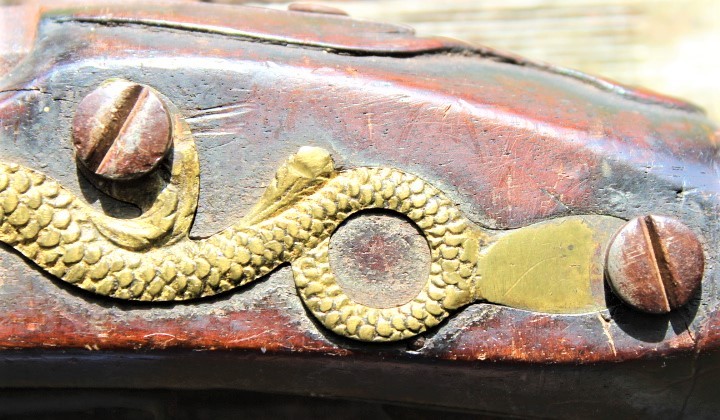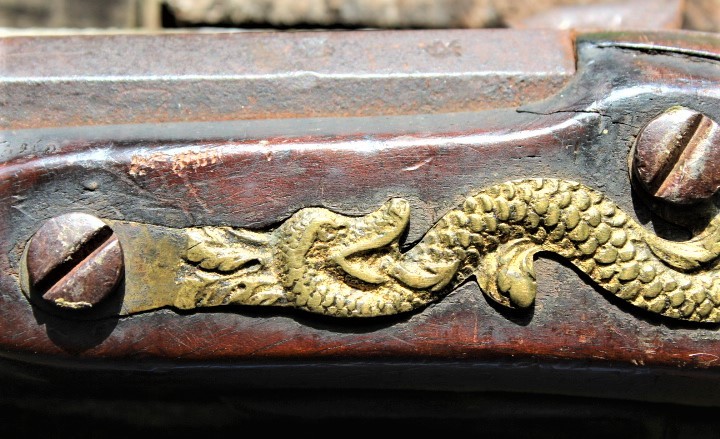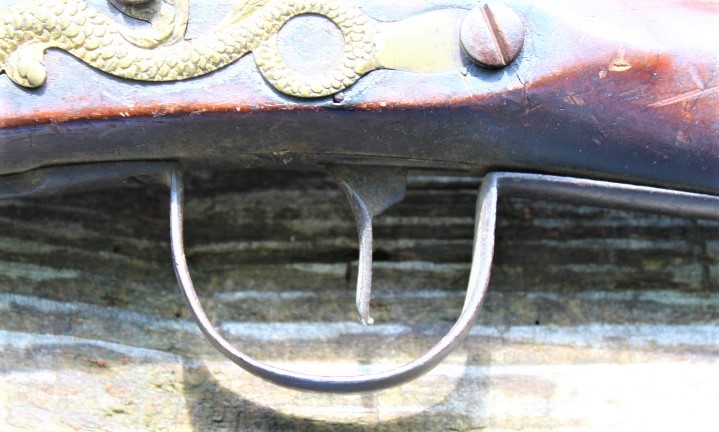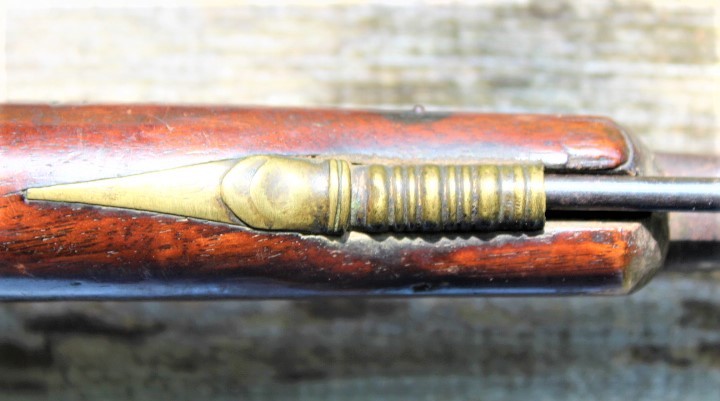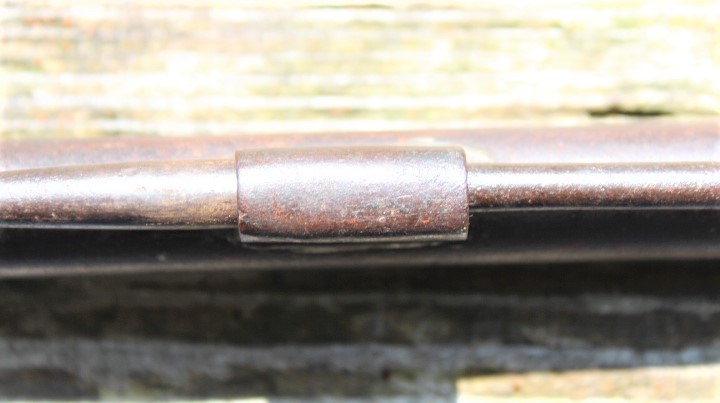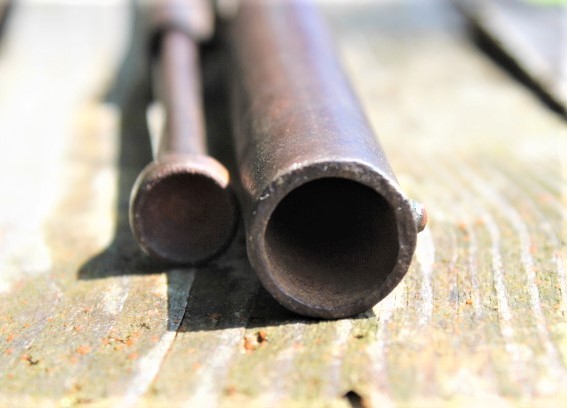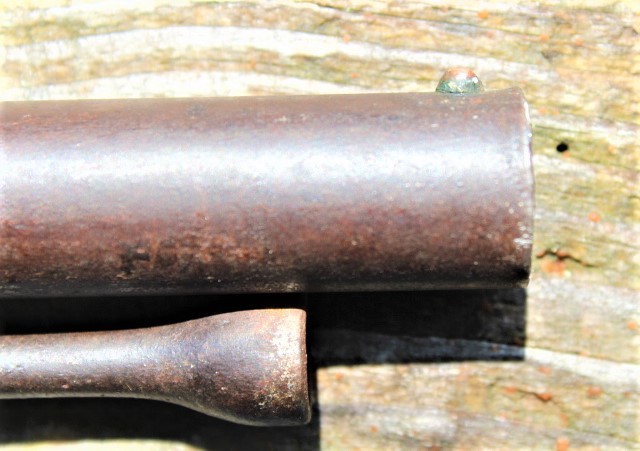Early 1800's Northwest Trade Gun for North West Company
Item #: AA3485
Click on an image to enlarge
This is a black powder trade gun from the early 1800's from an unknown manufacturer. I suspect the gun was made by Barnett, but there is no visible marking or stamp to verify that. The North West Company was headquartered in Montreal Canada from 1779 to 1821, when it was forced to merge with their principle rival, the Hudson Bay Company. The North West Company used the sitting fox within a circle as a means to identify their trade guns. This old trade gun was originally flint, but has been converted to percussion. It measures 47 1/2" overall, with a barrel length of 32". The barrel is the typical fowling piece design, with the first 7 1/4" being octagon at the breech terminating in baluster turned rings, then a 3 1/4 round section ending in baluster turned "wedding band" rings with the remainder of the barrel being round. The smooth bore barrel gauges out at .60 caliber. There is no rear sight on the barrel, the front sight is a small brass bead type. The barrel has an untouched brown patina except where the top barrel flat has been lightly cleaned looking for markings. There are two very clear Birmingham proofs marks on the left barrel flat at the breech end. A sitting fox within aa circle is stamped on the top barrel flat, the mark of the North West Company, but there is no other stamps or markings. The barrel has been converted for percussion use using the drum method. The lock plate and hammer have a matching patina of the barrel. The lock is stamped with the same fox within a circle just forward of the hammer, but there are no markings or stamps to the rear of the hammer. There is a double lined shield visible behind the trigger, identical to that found on Barnett stamped guns. The mechanics of the lock are frozen, the hammer does not move. I believe once disassembled and cleaned the lock will probably function normally. The bottom ramrod thimble and butt plate are brass, the trigger guard is iron. The side plate is made of brass, and is of the serpent or dragon design. This one has been together for a while, as the brass has a matching soft golden patina. A single barrel pin and tang screw retain the barrel to the stock. The stock has been shortened to about 1 1/2" forward of the rear ramrod thimble. The stock is a medium brown color and shows honest wear from use. The barrel channels are still amazingly crisp on the left side, a small sliver of loss on the right about the last 4" of the stock. There is the usual wood loss from burn out along the top of the lock near the nipple and just behind it. There are no major cracks in the wood anywhere, pretty amazing for a 200+ year old piece of wood. These old trade guns experienced many repairs and conversions during their life span in order to remain in use. This one is a perfect example, being converted from flintlock to percussion ignition. Then somewhere along the way it was made into a half stock and the barrel was shortened to match it. A single iron ramrod thimble has been soldered onto the bottom of the barrel 5" back from the muzzle. The iron ramrod that came with the gun looks to be a swelled, tulip head rod for an 1861 Springfield musket that has been shortened to work with the barrel. I believe this gun was manufactured between 1800 and 1820, just before the merger of the North West Company and the Hudson Bay Company. It has all the characteristics of a gun from that time period, brass serpent side plate, large trigger bow, circled sitting fox stamps, .60 caliber, and would go well in any fur trade gun collection.
(Sold)

